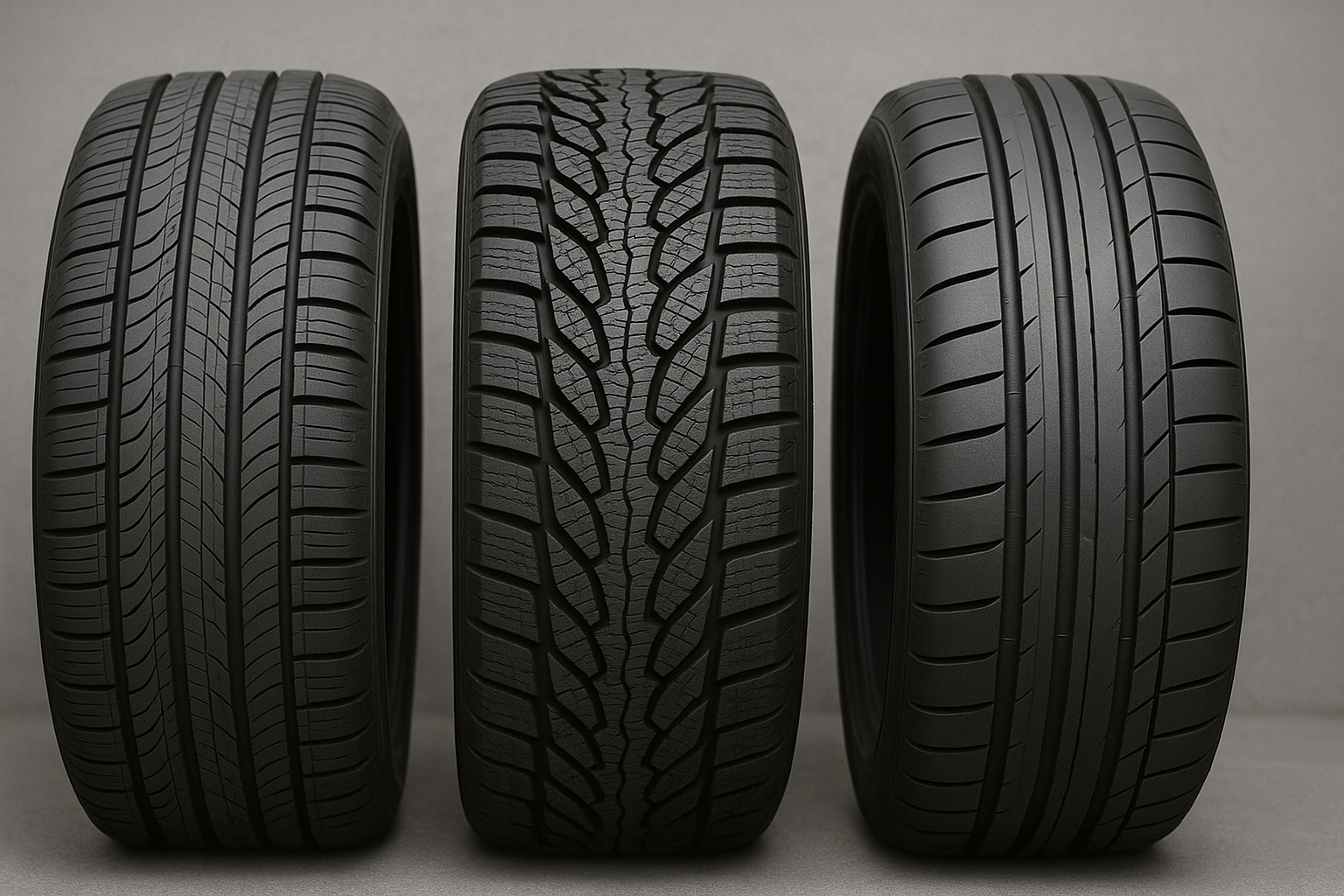Hook: Choosing the right tires can mean the difference between confident handling and dangerous slip-and-slides. Whether you live in mild climates or face heavy snow, this tire buying guide will help you decide between all season tires, dedicated snow tires, and performance-focused summer tires.
- Understand the performance characteristics of each tire type
- Learn when to switch and why seasonal tires matter for safety
- Get pro tips for selecting the best tire for your climate and driving style
Why Seasonal Tires Matter
Tires are your only contact patch with the road, and the rubber compound and tread design must match the conditions. Using the wrong tire in heat, rain, or snow reduces traction, lengthens braking distances, and accelerates wear. A proper tire buying guide ensures you invest in the right rubber for optimal performance and safety year-round.
All-Season Tires: The Versatile Compromise
Performance Profile
All season tires blend summer-grade tread compounds with shallow siping to handle light winter conditions. You’ll get acceptable wet and dry grip from spring through fall and limited snow performance down to around 20°F (-6°C).
Pros & Cons
- Pros: One set year-round; comfortable ride; moderate price
- Cons: Compromised in heat (softer compound wears faster) and in deep snow/ice
Snow Tires vs Summer Tires: Head-to-Head
Snow Tires (Winter Tires)
Designed with a softer rubber compound and deep, aggressive tread patterns with extensive siping, snow tires maintain flexibility down to -40°F (-40°C). They bite into snow, slush, and ice to deliver far superior traction compared to all-season options.
- Best Use: Regions with regular snowfalls, ice, and temperatures consistently below 40°F (4°C).
- Drawbacks: Noisy on dry roads, faster wear in warmth, and reduced cornering grip above 45°F (7°C).
Summer Tires
Summer tires feature stiffer compounds and minimal siping, maximizing rubber contact for sharp steering response, shorter braking distances, and high-speed stability in warm, dry, and wet conditions.
- Best Use: Temperatures above 45°F (7°C), performance driving, rainy summer roads.
- Drawbacks: Hard and unsafe below 45°F; poor snow and ice traction.
When to Switch: Temperature & Terrain Guide
Experts recommend:
- Install snow tires when average daily temperatures dip below 45°F (7°C).
- Switch to summer or all-season tires when temperatures stay consistently above 45°F.
- Use dedicated summer tires for spirited driving or track days—swap back before winter.
Pro Tips for Smart Tire Purchases
- Check your vehicle’s tire-size placard or owner’s manual for OEM recommendations.
- Compare wet/braking/handling ratings from reputable testing agencies (e.g., Tire Rack, Consumer Reports).
- Factor in cost of mounting, balancing, and storage for your second set of wheels.
- Inspect and rotate tires every 5,000–7,500 miles to maximize tread life.
Common Pitfalls to Avoid
- Mixing tire types – Never mix snow tires with summer tires on the same axle; it upsets handling balance.
- Ignoring alignment – New tires need proper alignment to prevent uneven wear and vibration.
- Skipping pressure checks – Seasonal temperature swings change PSI; check monthly.
FAQs
- Q1: Can I use all-season tires in winter if I drive carefully?
- A1: All-season tires handle light snow, but in heavy winter conditions or ice, dedicated snow tires vastly outperform them.
- Q2: How much sooner do snow tires wear in summer?
- A2: Snow-tire compounds are softer and can lose up to 50% of tread life if used year-round in warm conditions.
- Q3: Are summer tires worth the extra cost?
- A3: For performance drivers or those in consistently warm climates, the enhanced handling and braking can justify the premium.
Conclusion & Next Steps
Choosing between all season tires, snow tires, and summer tires comes down to your local climate, driving habits, and safety priorities. Use this tire buying guide to plan seasonal tire swaps, consult professional installers for mounting, and enjoy confident traction year-round. If this guide helped you, share it with fellow drivers or leave your own tire tips below!
